Heavy showers.
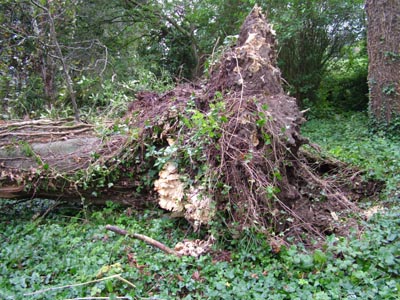
I mentioned the doomed Beech that fell in the storm. You can still see the Meripilus giganteus clinging to the trunk and another patch on the roots to the extreme right of the image. A large percentage of the lawn is now under broken branches.

This excellent lawn continues to deliver new fungi. This is Clavaria fumosa. Clump about 8 cm. across.
A fascinating new species. Cordyceps militaris is parasitic on buried moth pupae. Specimen about 3 cm. tall. The spores are unusual, so I'll try for some of those.
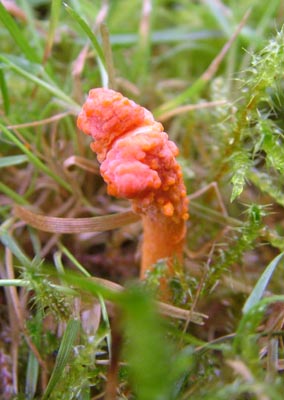

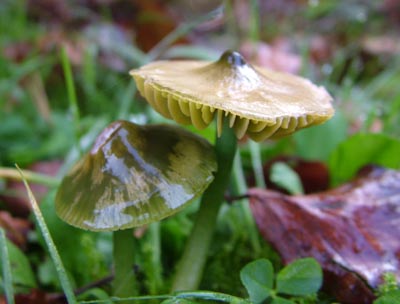
And while we're on impressive species, this is yet another waxcap - Hygrocybe psittacina - the Parrot Waxcap. The younger ones are even more impressive, but I'll have to wait for the exact moment: they only stay fresh for a day.
Another more common waxcap - Hygrocybe pratensis. I took the opportunist shot of the underside and on close examination the gills appear to have a couple of fly eggs on them.

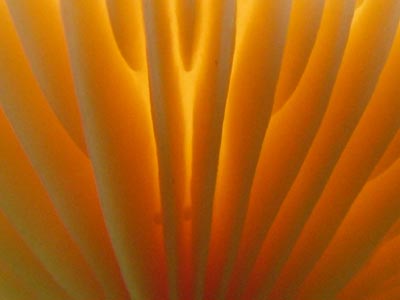
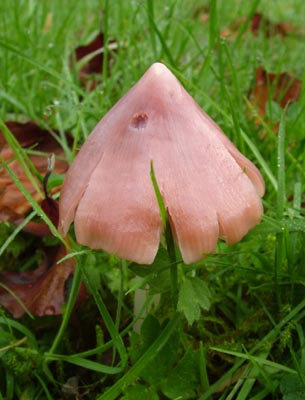
And a fresh example of Hygrocybe calyptriformis. These emerge from the grass looking like some ghoulish knuckle. This lawn just gets better and better.
I spotted this little (2 cm.) silk spinning and found a little spider inside. What a beautiful structure.


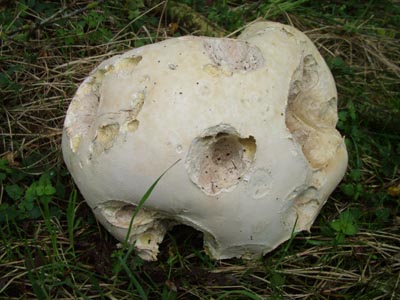
Another first (and a long time coming). Giant Puffball - Calvatia gigantea. This is a fairly modest specimen at 30 cm. across.
Still another from the lawn: Lactarius brittanicus. The milk is very mild.
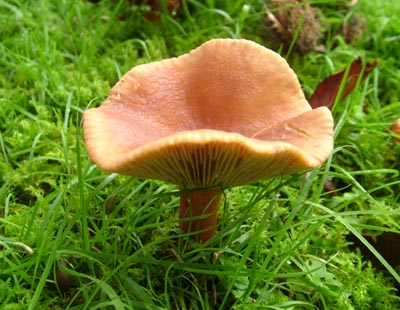
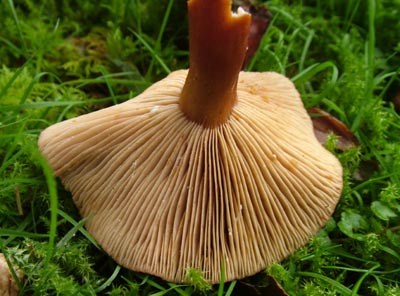
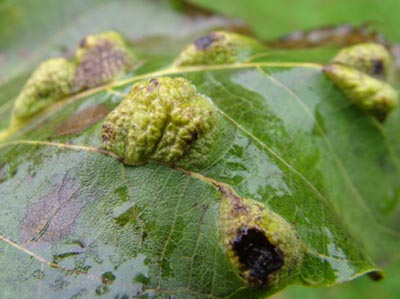
A leaf-gall on Black Walnut caused by the gall-mite Eriophyes erineus.
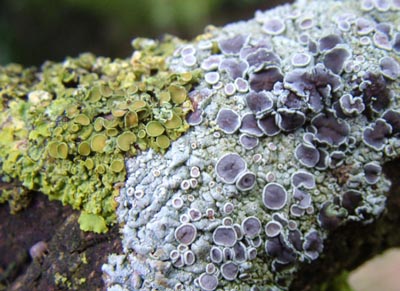
And finally a lovely shot of two lichens: Xanthoria parietina (left) and Physcia aipolia (right).